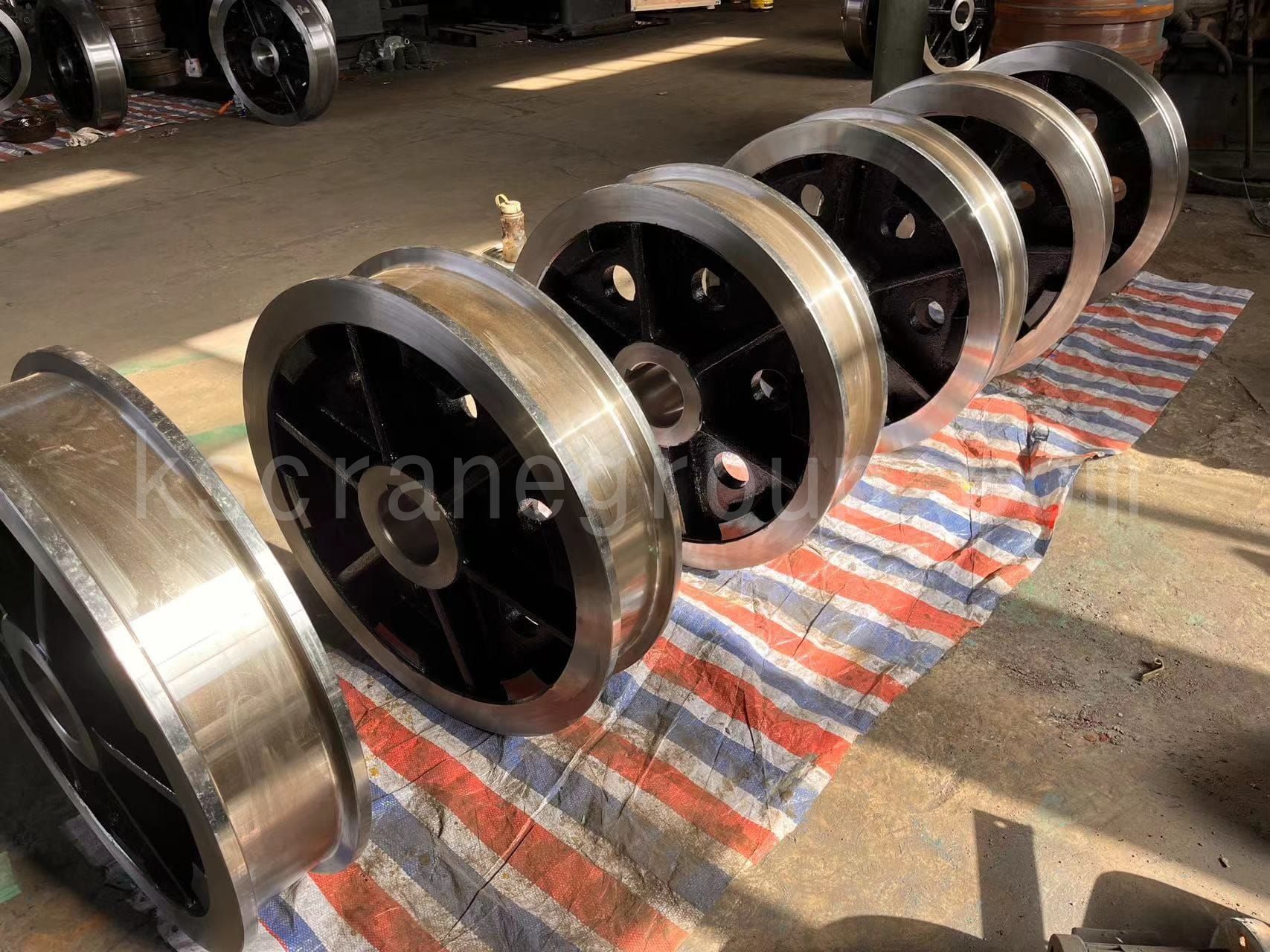- EQUIPMENT
-
special cranes
-

Garbage Grab Crane
-

Foundry Overhead Crane
-

Explosion-proof Overhead Crane
-

Tongs Overhead Crane
-

Overhead Crane with Carrier-beam
-

Electromagnetic Overhead Cranes
-

Diesel Hydraulic Straddle Carrier: Flexible Operation and Affordable Solution for Container Handling
-

Upper Spillway Gate Gantry Crane: Reliable Solution for Dam Gate Hoisting and Hydropower Station Operations
-

Harbour Portal Crane: Powerful and Intelligent Solutions for Efficient Port Handling
-

Coke Pot Crane for CDQ: Exceptional Heavy-Duty Red-Hot Coke Handling
-

Emergency Rescue Specialized Crane for Water-Rescue Simulation: Engineered for Lifesaving Training
-
-
Industry Crane
-

Industry Crane
-

Tundish Cranes
-

Slab Cranes
-

Scrap Cranes
-

Billet Cranes
-

Coil,Bar and Plate Handling Cranes
-

Cement And Precast Crane
-

Power Station Crane
-

Ladle Cranes
-

Paper Industry Cranes
-

Waste to Energy Cranes and Biomass Cranes
-

Tailored Overhead Cranes for Aerospace: High Precision, Efficience, Safety and Reliability
-

Anode Baking Multifunctional Cranes: Versatile, High-Temp Resistant & Smart-Controlled Must-Have for Electrolytic Aluminum Industry
-
-
Hoist & Winch Trolley
-

Casting Electric Wire Rope Hoist
-

European Model Electric Hoist
-

Explosion-proof Electric Hoist
-

Low-headroom Electric Hoist
-

Electric Chain Hoist
-

2 Types Explosion-Proof Electric Chain Hoists for Hazardous Zones: Gas & Dust Protection
-

2 Types Explosion-Proof Electric Wire Rope Hoists for Industrial Safety: Reliable Gas & Dust-Proof Solutions
-

Manual Hoists for Precision Lifting: Explore 3 Proven Types for Power-Free Operation
-

Air Pneumatic Hoists: 4 Specialized Designs for Precision, Safety, and Harsh Environments
-
-
CRANE Spreader
-
Crane Electromagnetic Lifting Magnets
-

Lifting Electromagnet for Turning and Side Hung
-

Lifting Electromagnet for Thick Plate
-

Specialized Electromagnet for Lifting Steel Plates
-

Lifting Electromagnets for Lifting Steel Plates
-

Lifting Electromagnet for Heavy Rail and Profiled Steel
-

Lifting Electromagnet for High Speed Wier(Coiled Bar)
-

Lifting Electromagnet for Rebar and Steel Pipe
-

Lifting Electromagnet for Bundled Rebar and Profiled Steel
-

Lifting Electromagnet for Billet, Girder Billet and Slab
-

Lifting Electromagnet for Steel Scraps
-
- Crane Spreader
- Crane Hook
- Crane Lifting Tongs and Clamps
-
Crane Electromagnetic Lifting Magnets
- CRANE PARTS
- Transfer Cart

Overhead Crane Wheel Block Assembly: Reliable, Customizable, and Built to Last
The overhead crane wheel is one of the core components of the traveling mechanism of an overhead crane. It supports the total weight of the crane and enables smooth movement of both the main trolley (bridge traveling) and the auxiliary trolley (hoisting trolley) along the rails.
High-strength and wear-resistant crane wheels not only determine the stability of crane operation but also directly affect the service life and operational efficiency of the equipment.
In an overhead crane, the wheels are mainly used in two parts:
- The overhead crane end truck wheel uses double flange wheels to ensure stable traveling of the crane on the main rails and to prevent derailment;
- The overhead crane trolley wheel uses single flange wheels to achieve smooth and flexible lateral movement along the main girder.
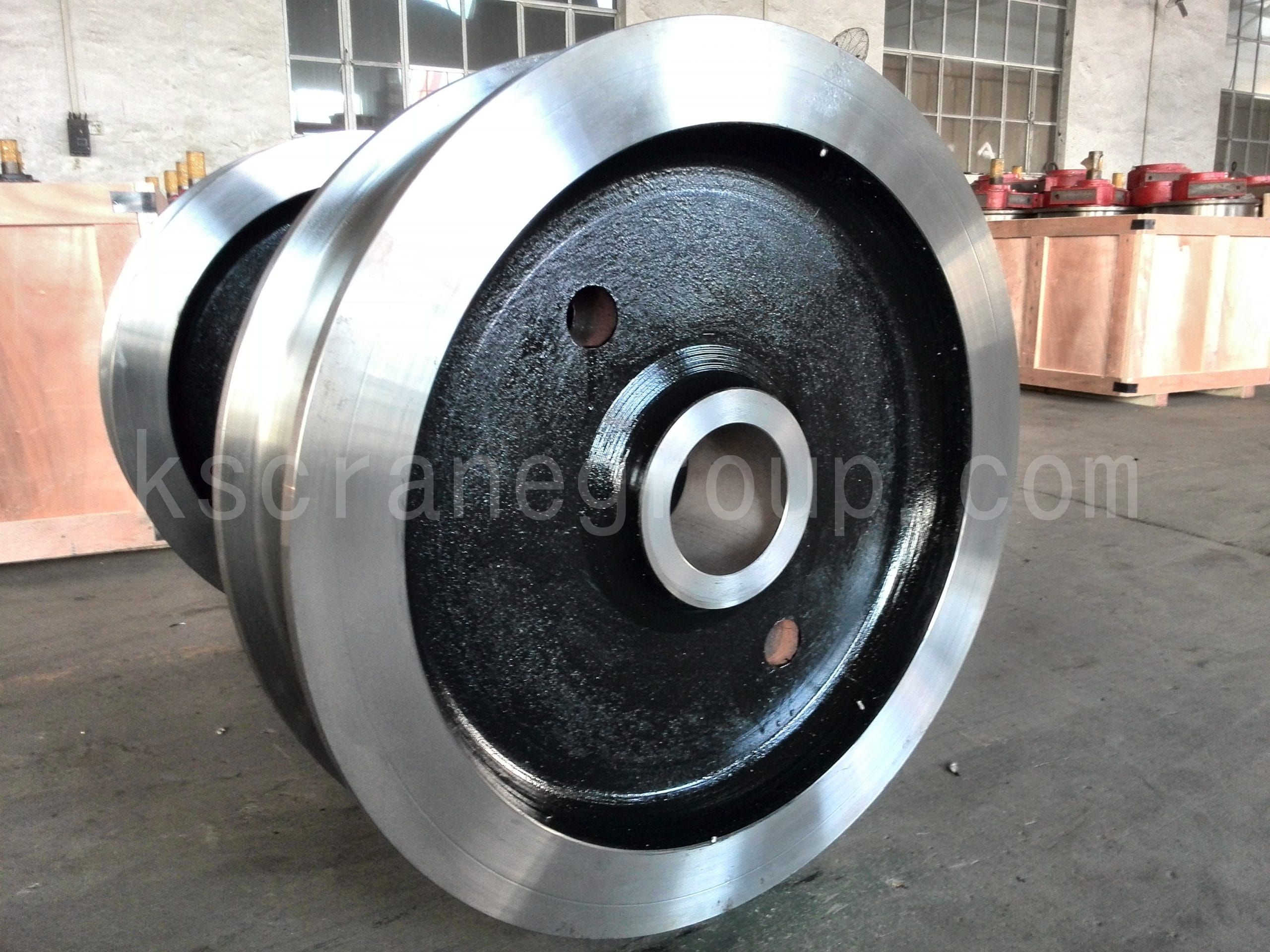
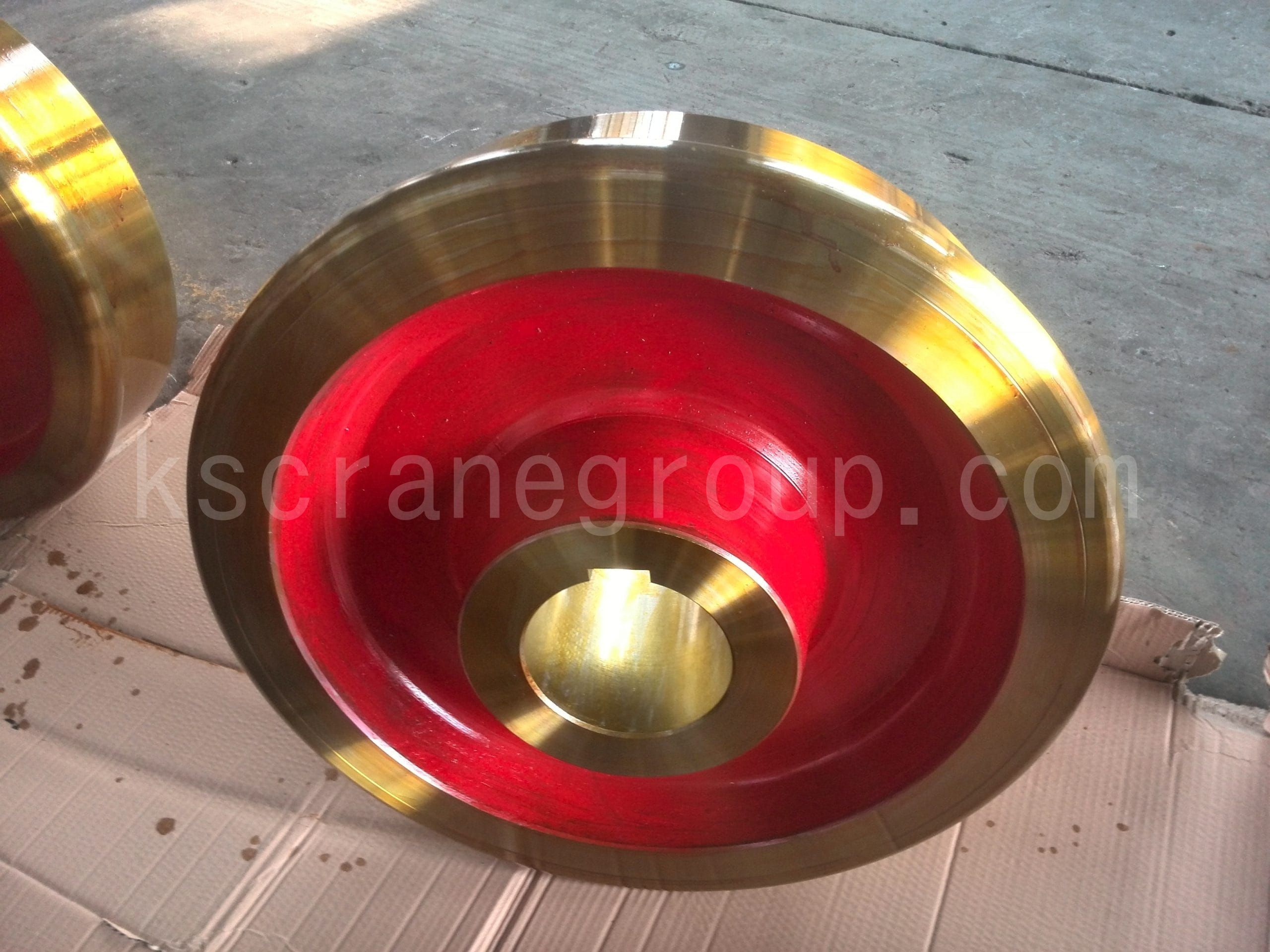
Although the overhead crane wheel is a single component, it plays a crucial role in the overall operation of the crane — it not only bears the vertical load but also guides the traveling direction.
Considering the various working conditions and operational requirements, wheels are usually not installed individually but assembled as a complete wheel block assemblies.
Kuangshan Crane provides a full range of overhead crane wheel assemblies, from standard structures (L-type, 45° split type) to round bearing box structures (FEM standard), meeting different load capacities, working environments, and customization needs.
Application of Overhead Crane Wheels in Cranes
In an overhead crane, wheels are mainly distributed on the bridge traveling mechanism and the trolley traveling mechanism. They are key components that enable the entire crane to travel longitudinally and the trolley to move transversely.
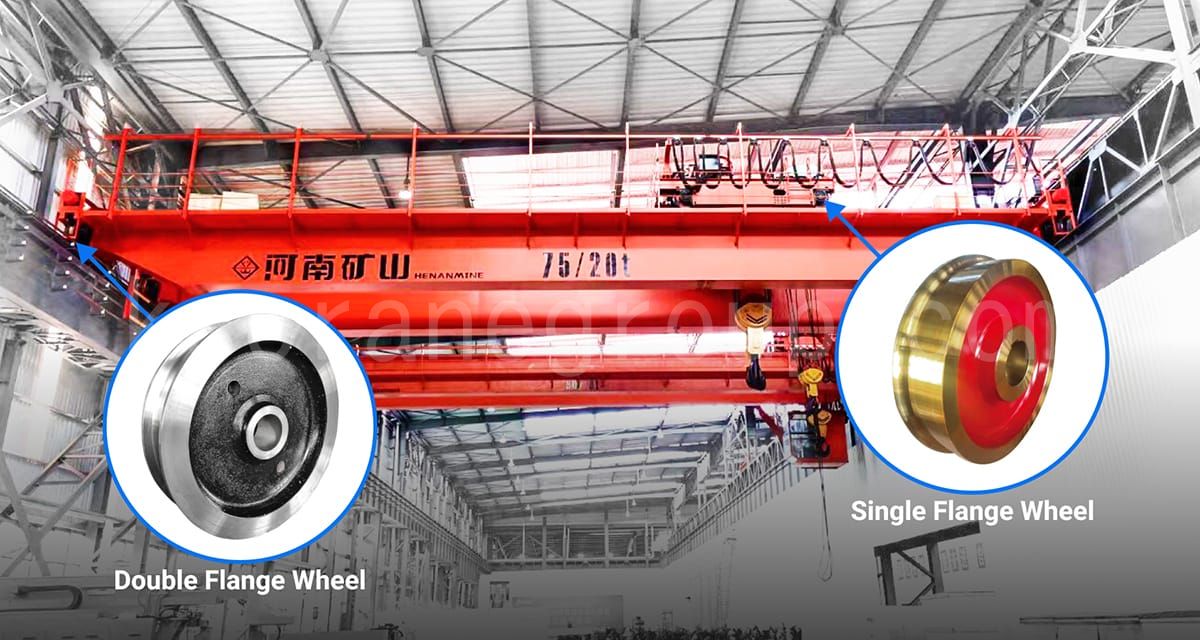
- Overhead Crane End Truck Wheels : These wheels support the entire crane to move longitudinally on the workshop rails and generally adopt a double flange wheel design. The double-flange structure effectively prevents derailment and ensures stability during long-distance travel.
- Overhead Crane Trolley Wheels: These wheels are installed under the hoisting trolley and travel transversely along the main girder rails. They usually adopt a single flange wheel design, which facilitates smooth steering of the trolley, reduces rail wear, and provides lighter operation.
Types of Overhead Crane Wheel Block Assemblies
Overhead crane wheels bear the entire equipment load and provide traveling guidance. Depending on installation position, working load, and maintenance requirements, wheels are generally supplied as wheel block assemblies.
Different structural types — such as L block crane wheel assembly, 45°split bearing box crane wheel assembly, and round bearing box crane wheel assembly (European type) — each offer unique advantages in load capacity, installation convenience, and space efficiency.
These design variations provide a reliable basis for selecting the most suitable wheel assembly according to specific application needs.
KUANGSHAN CRANE manufactures a wide range of overhead crane wheel assemblies that meet both domestic standard overhead cranes and FEM standard overhead cranes, widely applied in LD, LH, QD type overhead cranes, as well as FEM-standard European overhead cranes.
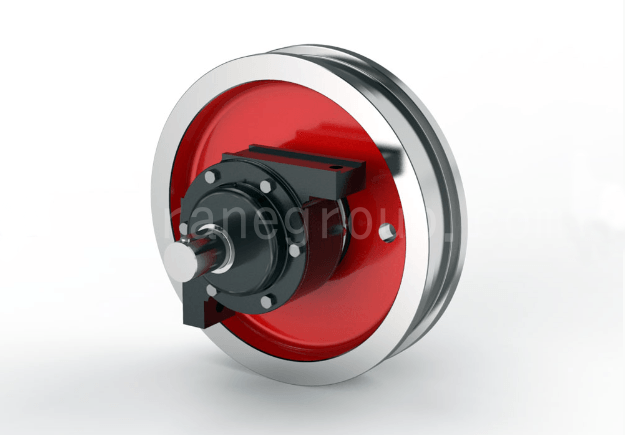
- Simple structure, easy installation and maintenance;
- High support rigidity and excellent cost performance;
- Material composition tested with the German SPECTRO spectrometer to ensure material accuracy;
- Smooth transmission and low noise.
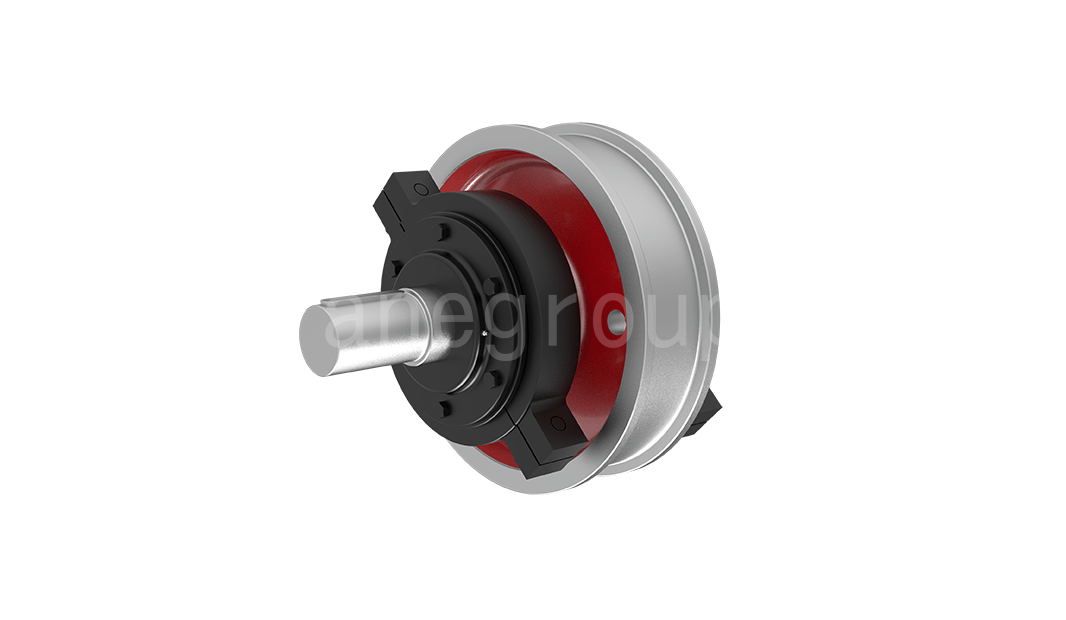
- Convenient assembly and disassembly, high assembly accuracy, and stable operation;
- Excellent wear resistance and impact resistance, greatly extending service life;
- Smooth transmission and low noise.
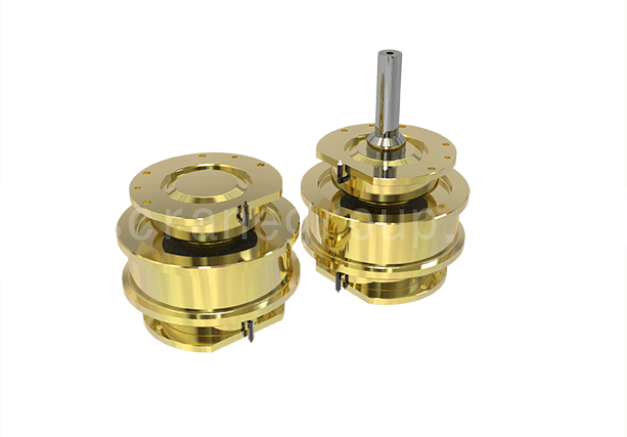
- Wheel diameter range: Φ160mm – Φ1000mm;
- Forged materials such as 42CrMo and 65Mn, with wear-resistant surface;
- Reserved encoder interface for effective crane deviation correction;
- High transmission efficiency, large wheel load capacity, and optional precise positioning device.
We can design and manufacture matched overhead crane wheel assemblies according to the rail model, crane type, running speed, and working class provided by the customer.
Main Parameters:
- Wheel diameter: 160mm – 1000mm
- Wheel material: 42CrMo, ZG50SiMn, 65Mn, ZG340–640
- Heat treatment: quenching, tempering, and annealing
- Surface hardness: HRC 40–55, hardened layer depth 8–12 mm
- Applicable structures: single girder, double girder, and European-type bridge crane
Applications of Overhead Crane Wheel Assemblies
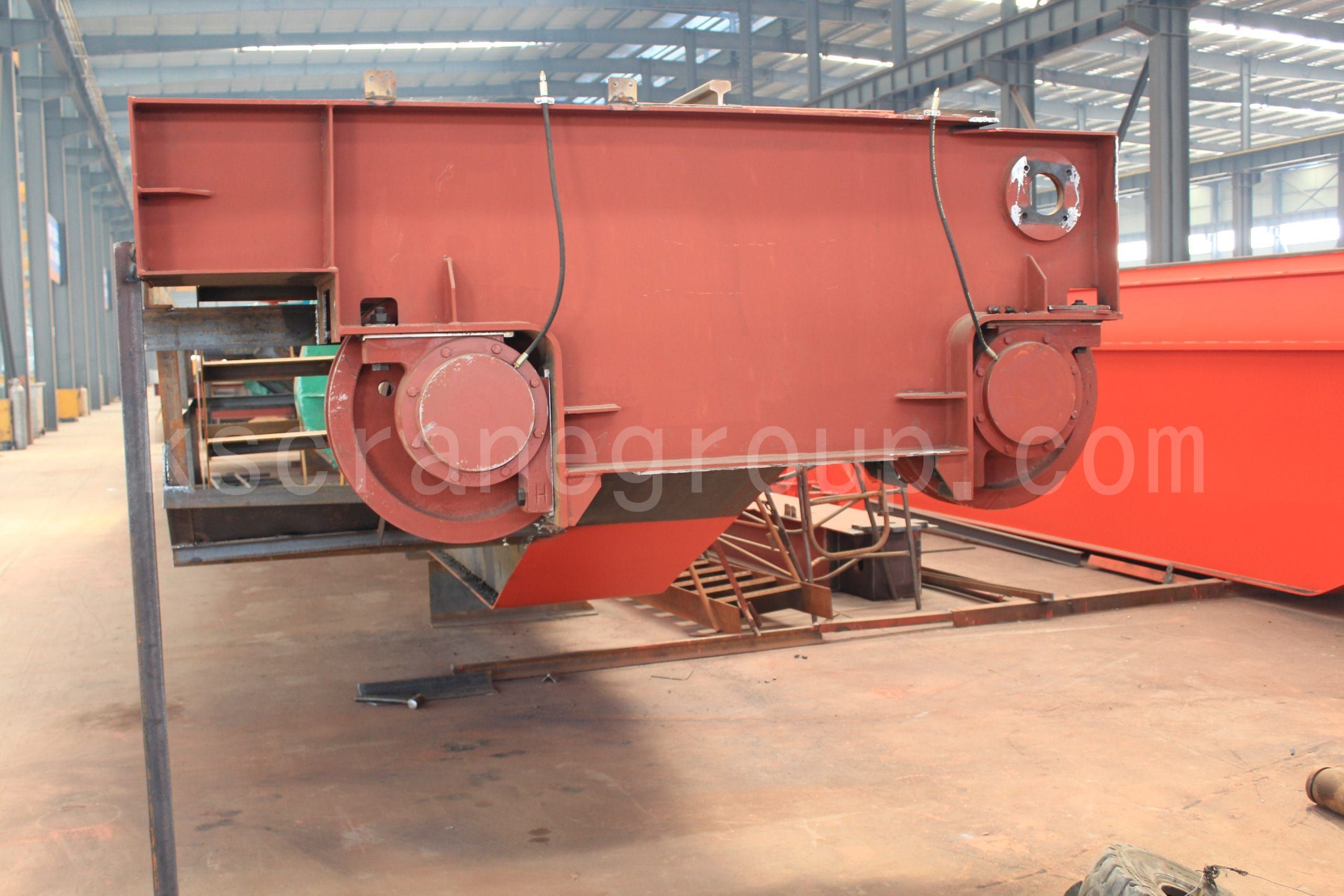
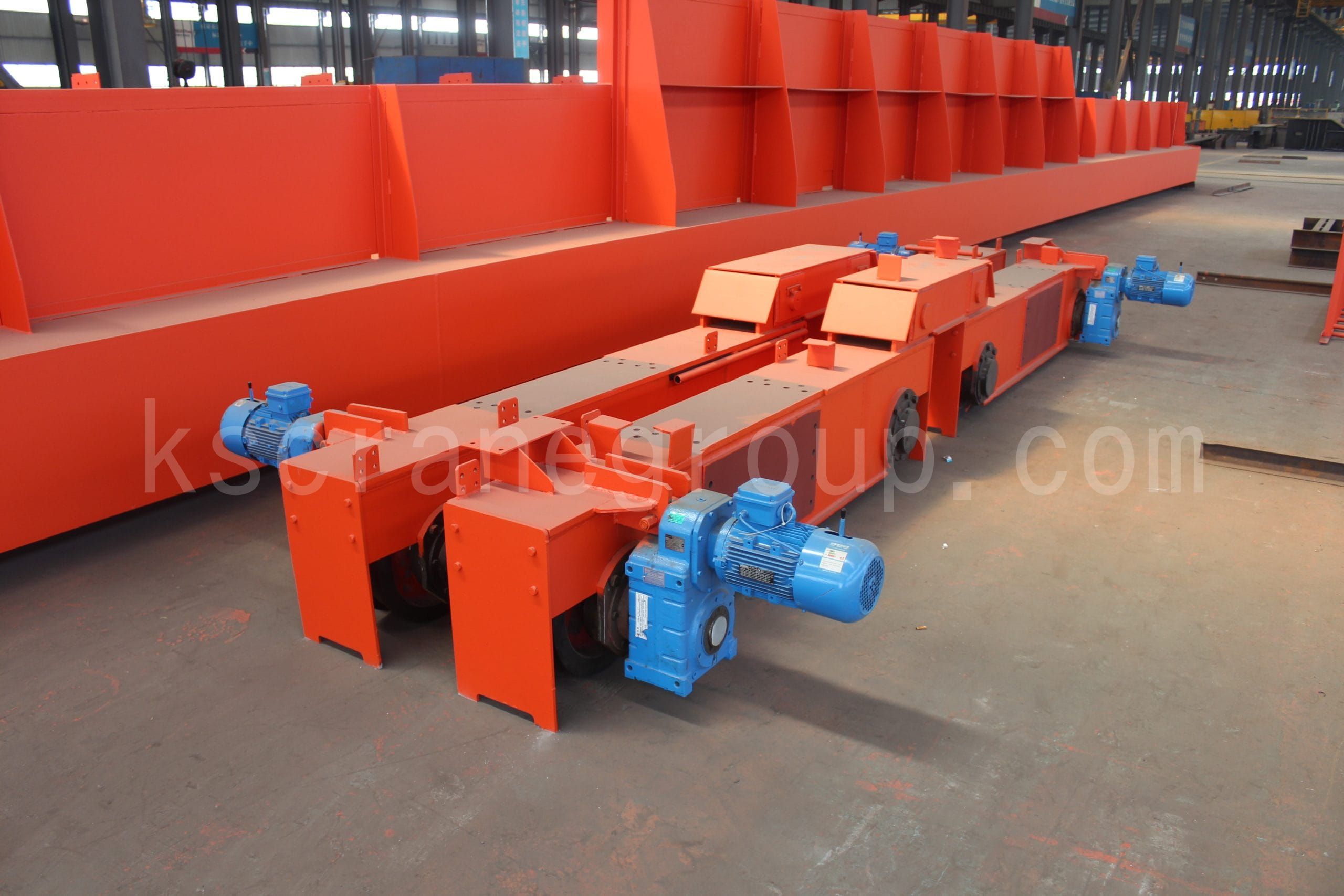
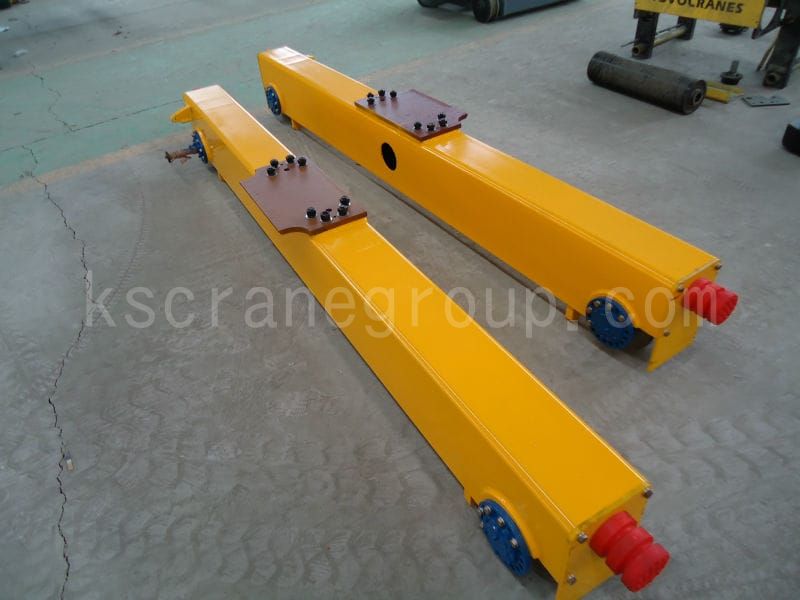
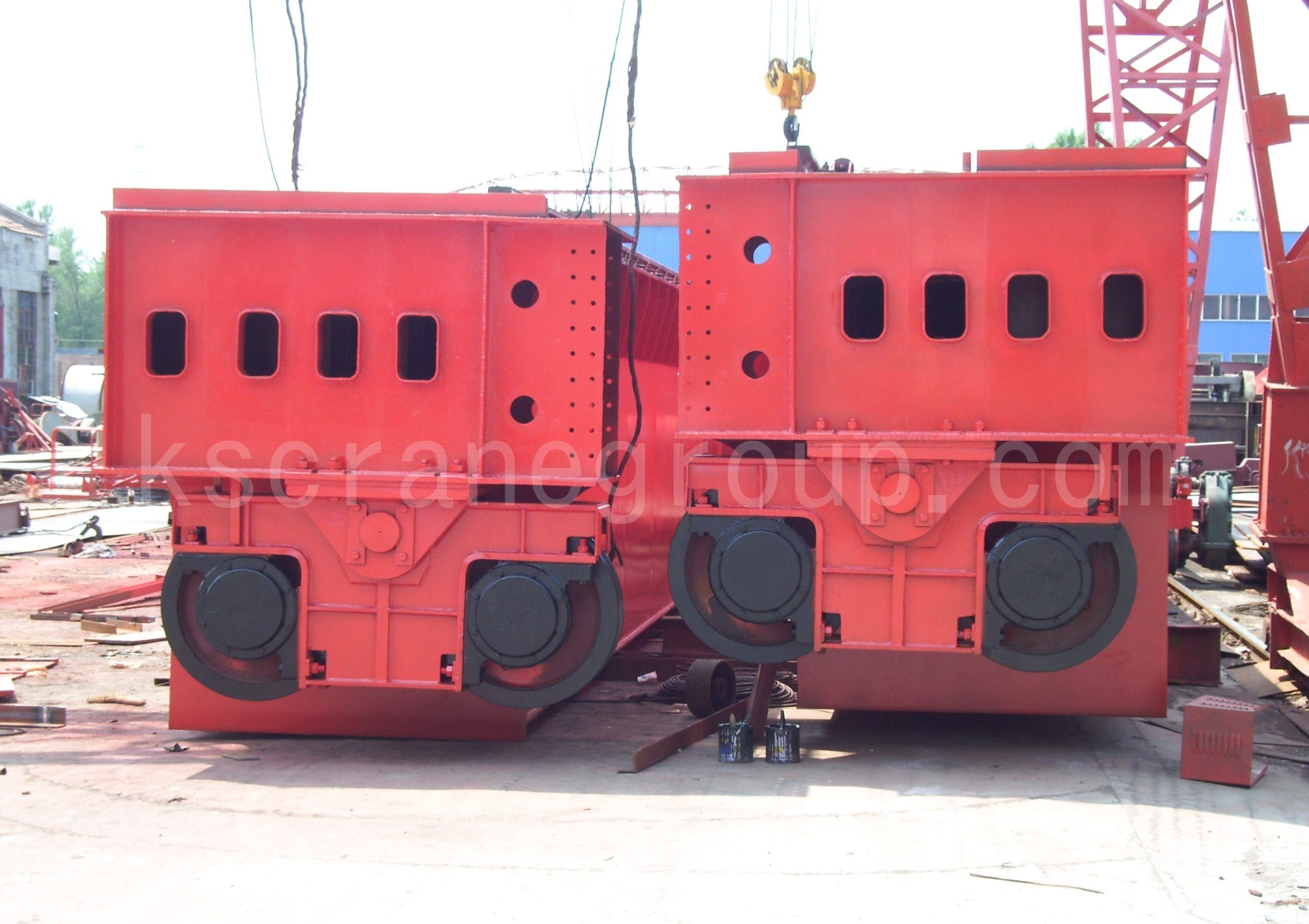
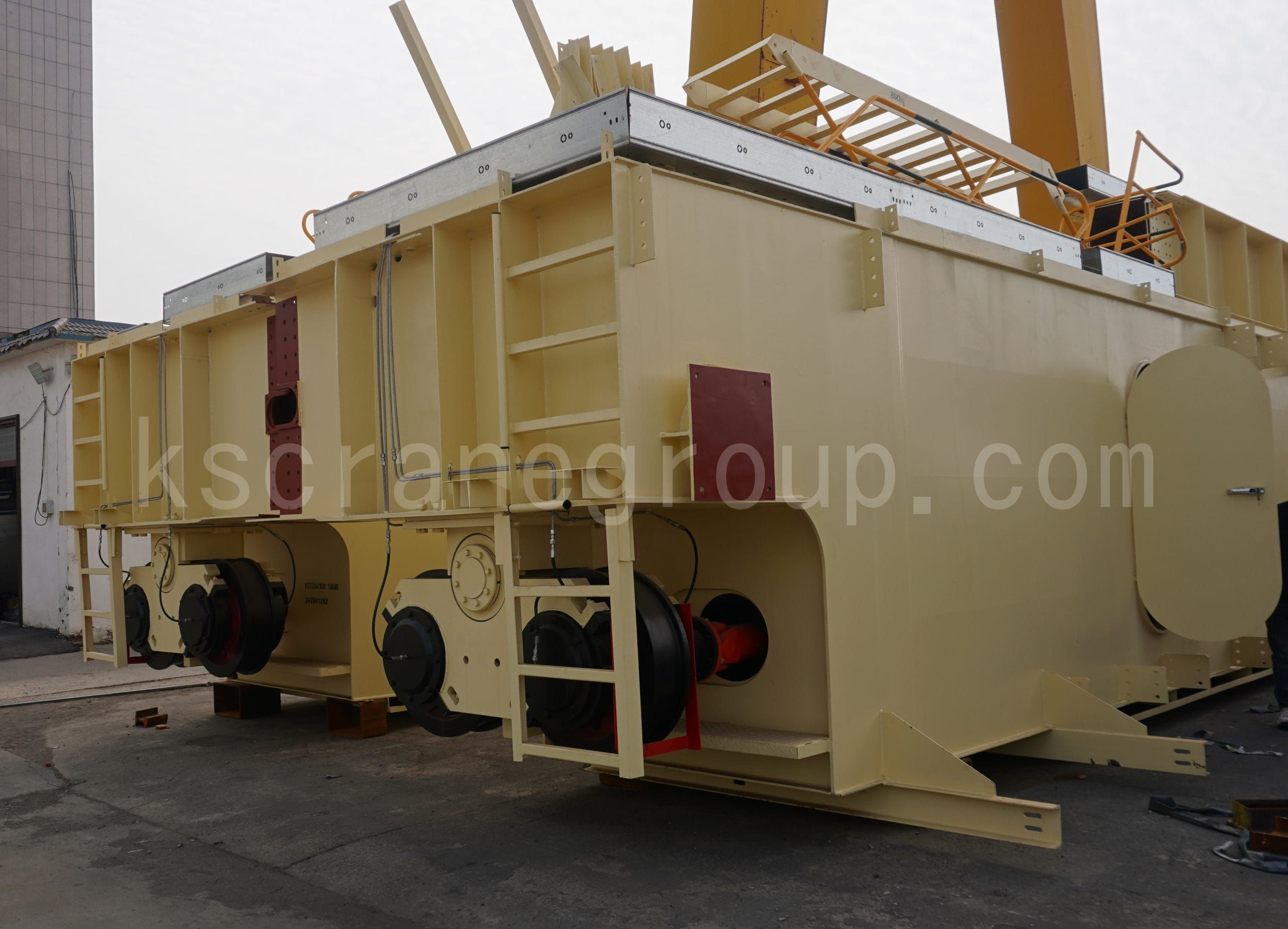
Overhead Crane Wheel Advantages
- Forged wheels with high density and long service life.
- Precision machining ensures uniform rail contact and reduces rail wear.
- High-strength bearings and bearing housings ensure smooth operation.
- Strict tolerance control, compliant with ISO / FEM standards.
- Customized design service available to suit different rail gauges and loads.
Optional Customization Services
- Customizable wheel diameter and wheelbase.
- Optional spline shaft or keyed shaft structure.
- Optional sealed bearings or high-temperature bearings.
- Available in European or Chinese standard installation dimensions.
- Surface anti-corrosion treatments: painting, phosphating, galvanizing, etc.
Why Choose KUANGSHAN CRANE
- Over 20 years of experience in overhead crane wheel assembly manufacturing.
- In-house integrated production line for forging, heat treatment, machining, and testing.
- Products exported to more than 50 countries, serving overhead cranes, gantry cranes, and metallurgical industries.
- Certified by ISO, CE, FEM, and other international standards.
- Each wheel assembly comes with material and flaw detection reports.
KUANGSHAN CRANE Wheel Production Line
All crane products from Henan KUANGSHAN CRANE are equipped with forged wheels, covering all types of cranes.
The production process integrates heating, conveying, forging, rolling, heat treatment, and continuous machining — ensuring fast rhythm, high efficiency, and short delivery cycles.
High-quality raw materials are strictly selected, and the 10,000-ton press applies immense pressure to forge a tough and dense core, reflecting KUANGSHAN CRANE's craftsmanship and pursuit of excellence.
The wheels feature superior performance, compact structure, refined grain, and greatly improved strength, toughness, and fatigue life.
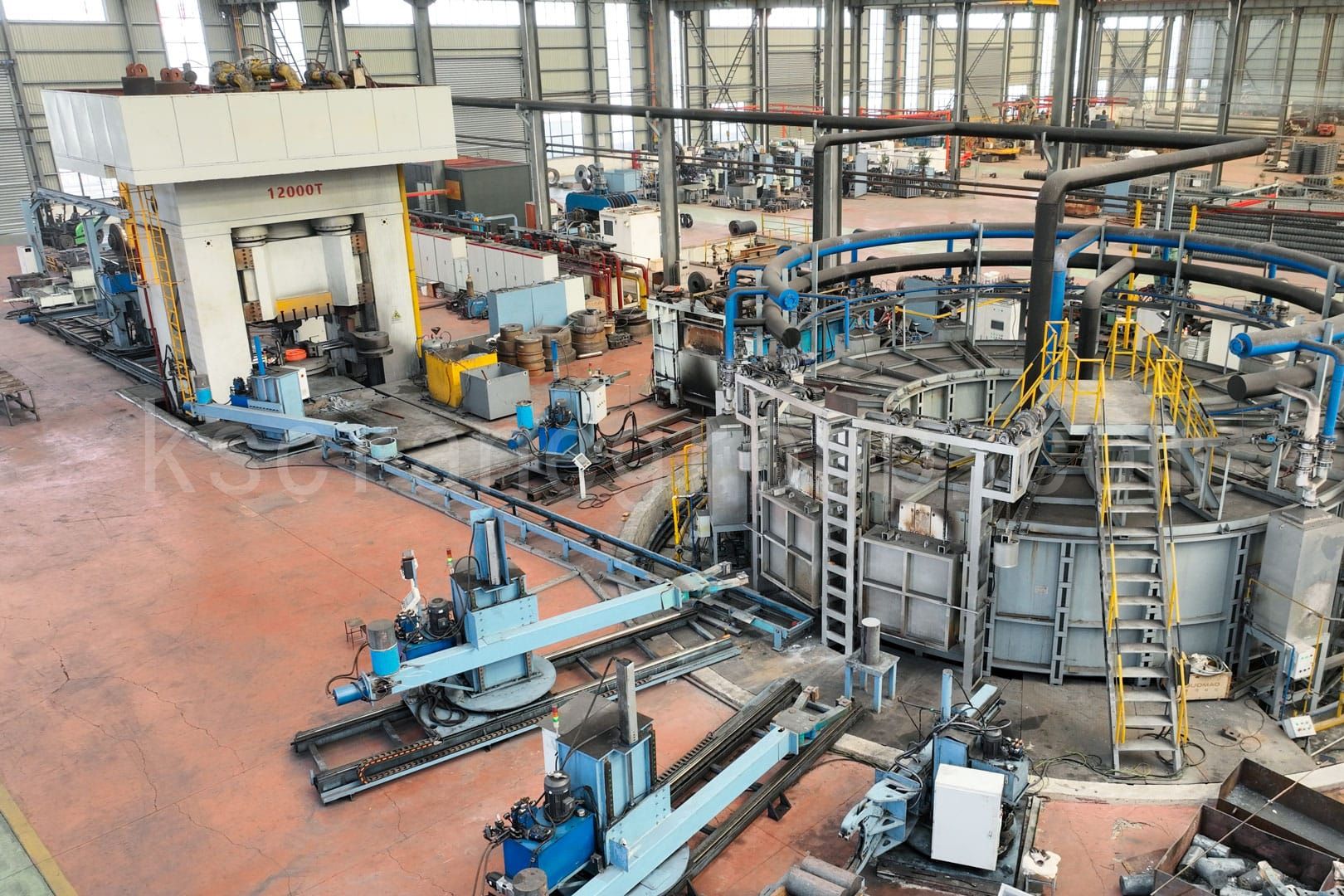
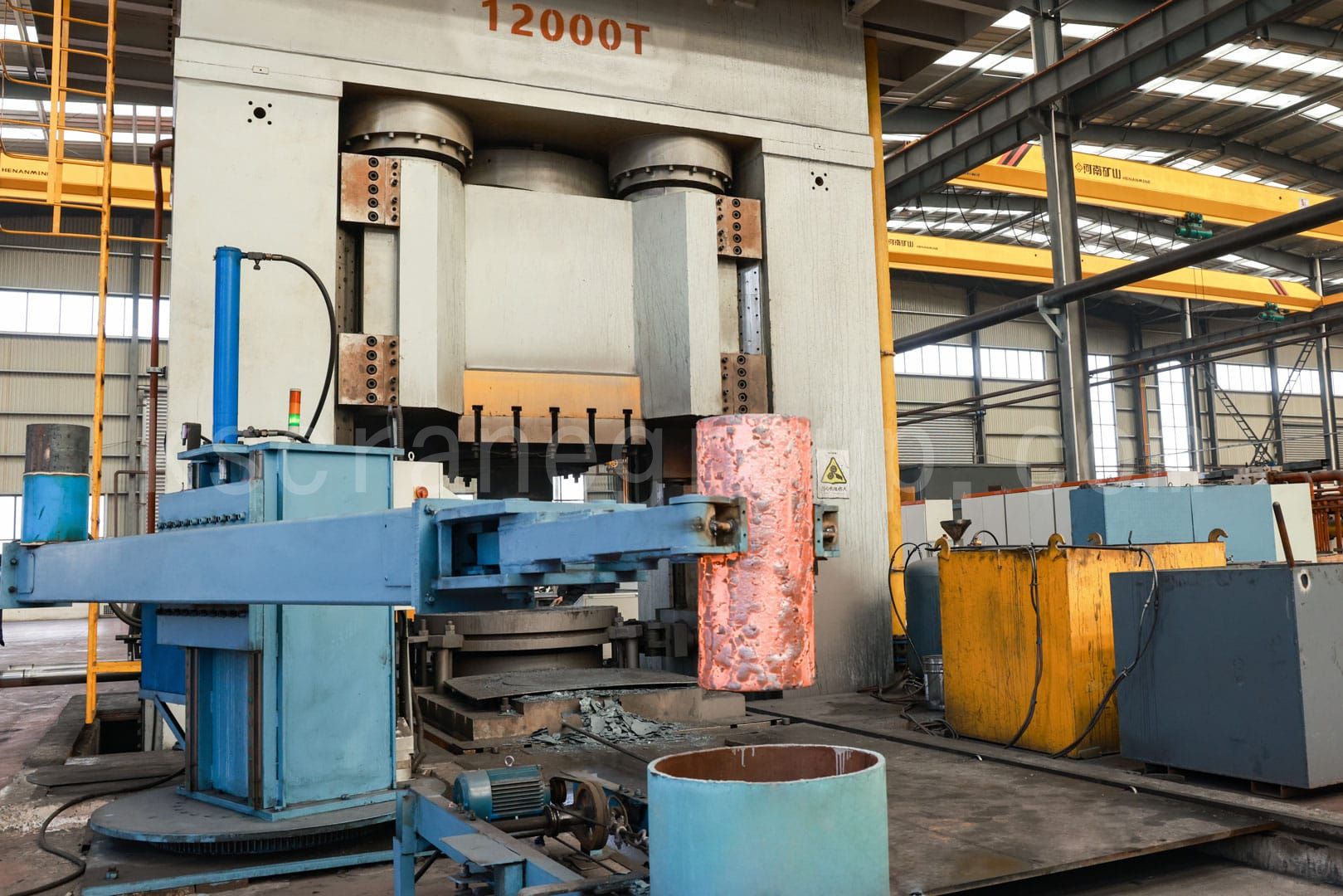
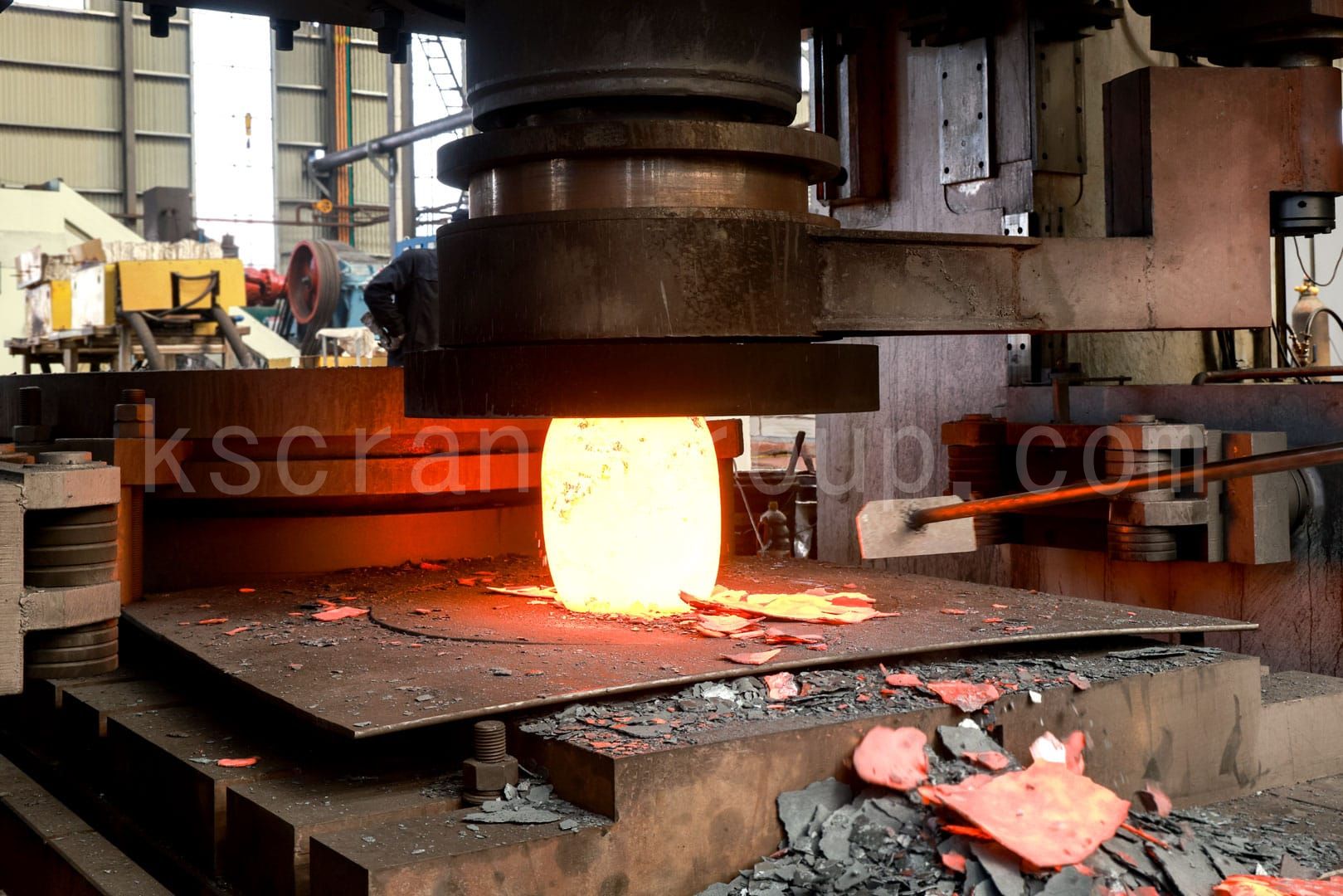
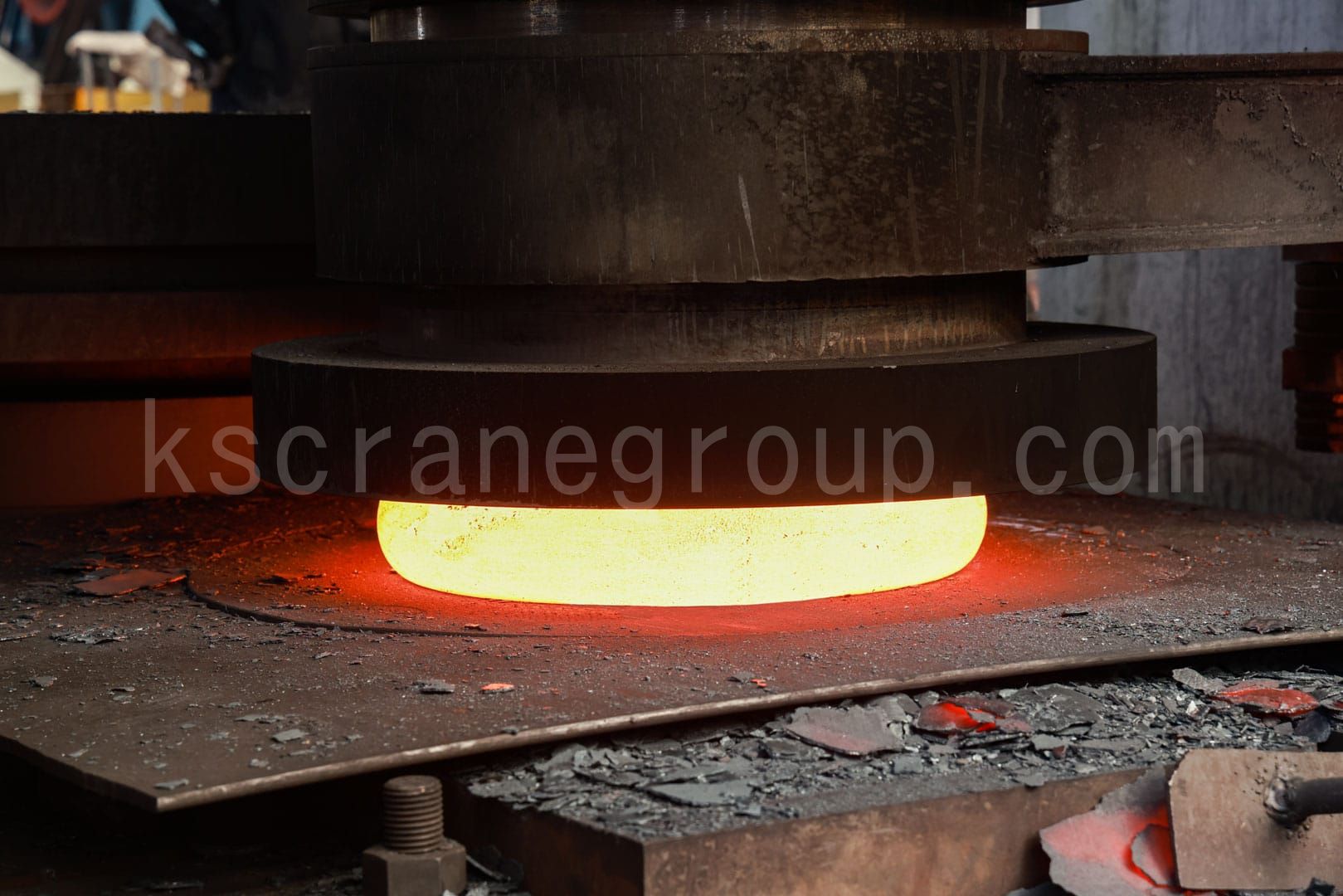
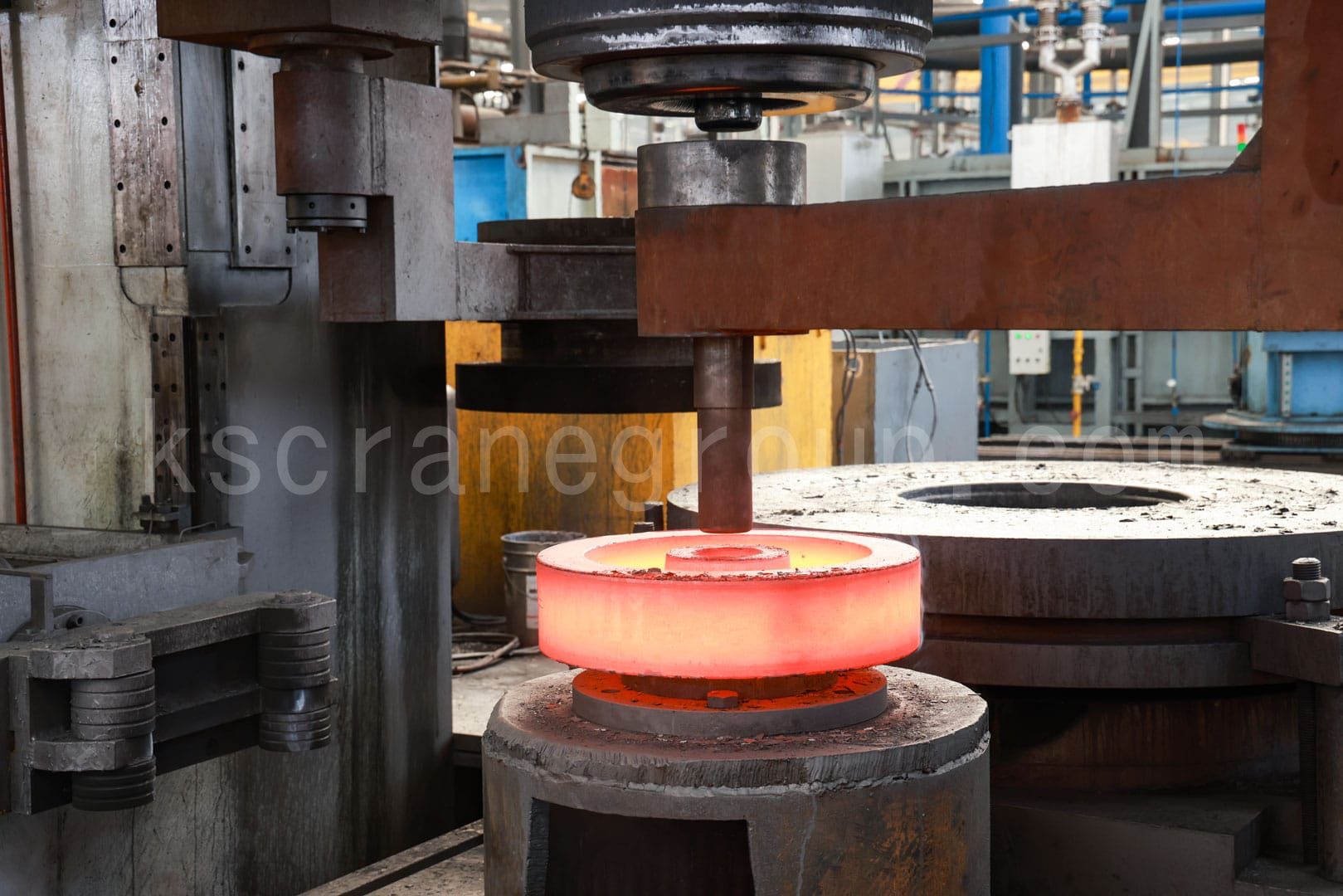
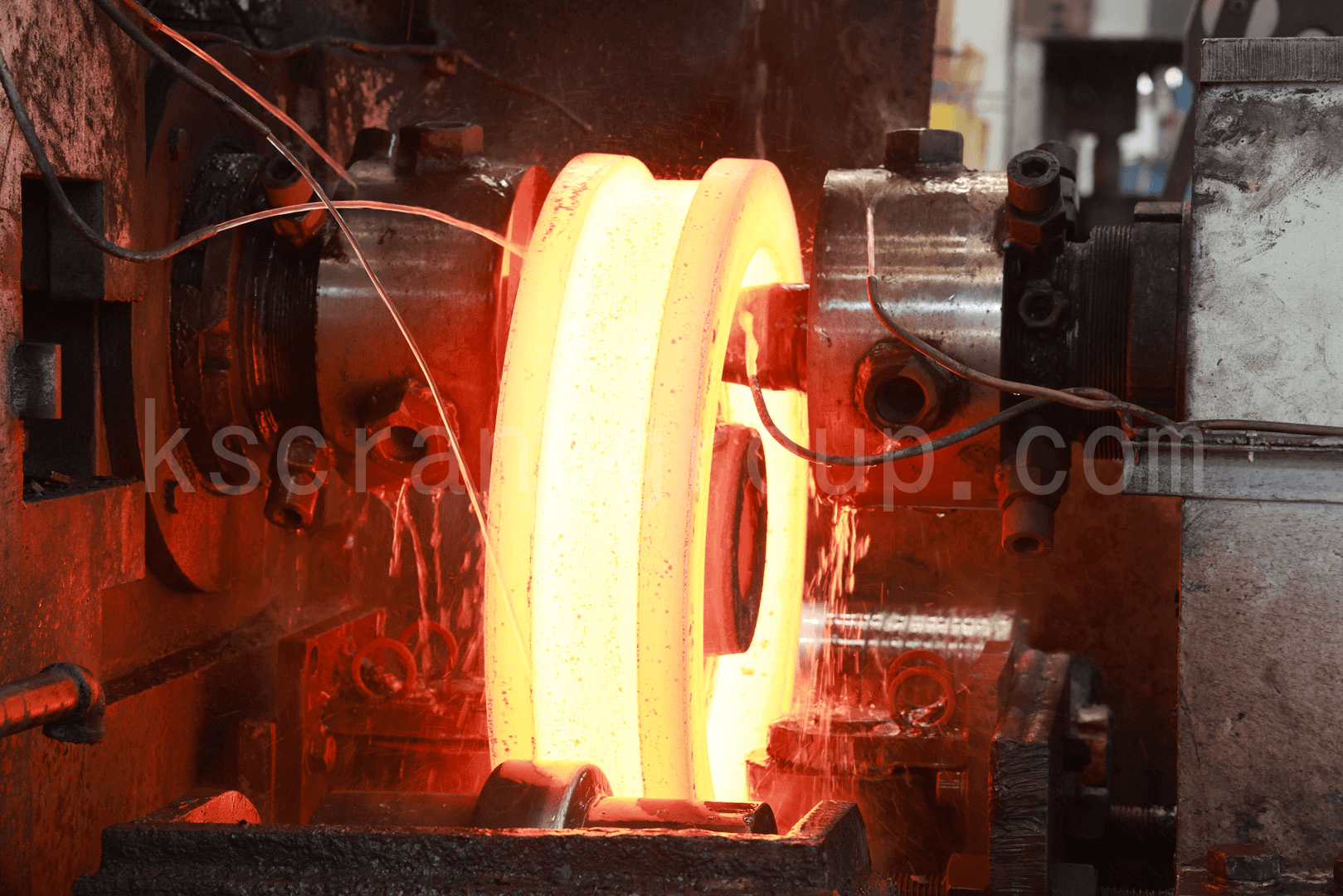
KUANGSHAN CRANE Wheel Export Cases
Conclusion
The overhead crane wheel is a key component that ensures the safe and smooth operation of bridge cranes.
KUANGSHAN CRANE provides a full range of wheel assemblies — from single flange and double flange wheels to L block crane wheel assembly, 45°split bearing box crane wheel assembly, and round bearing box crane wheel assembly (European type) — meeting the needs of various crane types and working environments.
With high precision, long service life, and easy maintenance, our overhead crane wheel assemblies are the most reliable choice for your overhead crane system.
FAQ
How are the maximum and minimum crane wheel loads calculated?
1. Maximum wheel load (under full load): Usually occurs when the trolley is carrying a load and moves to the extreme position near the end beam. At this point, the wheel located closest to the end beam bears the maximum load.
2. Minimum wheel load (under no load): Occurs when the trolley is positioned at the mid-span without any load, resulting in the minimum load on one side's wheel.
Use the Online Crane Wheel Load Calculator to easily perform these calculations.
What risks may occur if the crane wheel design does not meet the required standards?
If the wheel design or selection is improper, multiple safety and performance issues may arise, such as:
1. Wheel breakage or severe wear, posing safety risks.
2. Crane derailment or rail damage.
3. Uneven wear causing increased vibration and noise.
4. Reduced equipment lifespan and increased maintenance costs.
5. Premature failure of transmission systems and rails.
See Smart and Reliable Crane Wheel Load Calculation for strict quality requirements and detailed guidance.
Why does wheel gnawing occur in overhead cranes?
Wheel gnawing is one of the most common faults in cranes. It is characterized by excessive friction between the wheel flange and the rail side, leading to wear, unstable operation, or even rail damage.
Common causes include:
1. Manufacturing errors: Misalignment of main beams or end beams causing operational deviation.
2. Rail installation issues: Inconsistent rail gauge or rail deformation.
3. Drive system synchronization errors: Uneven motor speeds on both sides, resulting in skewed operation.
4. Differences in wheel diameter or uneven wear: Increasing the likelihood of wheel gnawing.
For detailed analysis and prevention methods, refer to Overhead Crane Wheel Gnawing: Causes, Diagnosis, and Preventive Measures
Get in Touch
- Free and fast quote for the product.
- Provide you our product catalog.
- Your local crane projects from our company.
- Become our agent and earn commission.
- Any questions, contact us.





























.png?w=200&h=134)





















